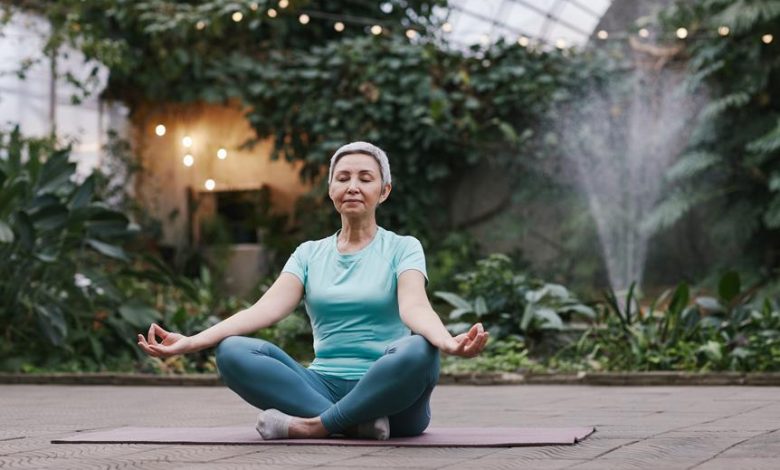15 Everyday Mindfulness Exercises to Know

Feeling overwhelmed by the chaos of everyday life? Struggling to stay present and focused? Incorporating mindfulness exercises into your routine could be the answer you've been searching for. In this article, we'll explore 15 everyday mindfulness exercises to help you cultivate calm and clarity. From breathing exercises to mindful eating, these techniques have numerous benefits, from reducing stress to boosting creativity. So, let's dive in and discover the power of everyday mindfulness exercises.
Key Takeaways
- Mindfulness exercises such as breathing exercises, body scan meditation, walking meditation, and mindful eating can be incorporated into everyday life.
- Practicing mindfulness can help reduce stress and anxiety, improve focus and concentration, enhance self-awareness, and boost creativity and problem-solving skills.
- Mindfulness in the workplace can increase productivity and efficiency, improve decision-making and problem-solving, enhance communication and teamwork, reduce workplace conflicts and stress, and foster a positive work environment.
- Mindfulness can also be beneficial for stress management, emotional regulation, better sleep, improved focus, self-compassion, physical health, improved relationships, work-life balance, better decision-making, creativity, resilience, and personal growth.
Breathing Exercises
To begin your mindfulness practice, try incorporating these three breathing exercises into your daily routine. Breathing exercises are a fundamental aspect of mindfulness, as they help you cultivate awareness of the present moment and connect with your breath. Not only are these exercises simple and easy to do, but they can also have profound effects on your overall well-being.
First, practice mindful breathing during sports activities. Whether you're running, playing tennis, or lifting weights, pay attention to your breath as you move. Notice the sensation of the air entering and leaving your body, and use your breath as an anchor to stay present in the moment.
Secondly, use breathing exercises for chronic pain management. When you experience pain, focus on your breath as a way to redirect your attention away from the discomfort. Take slow, deep breaths, allowing the breath to soothe and relax the areas of pain.
Lastly, incorporate deep belly breathing into your daily routine. Find a comfortable seated position, place one hand on your belly, and take slow, deep breaths, allowing your belly to rise and fall with each inhalation and exhalation. This type of breathing activates the relaxation response in your body, promoting a sense of calm and reducing stress.
Body Scan Meditation
Try incorporating body scan meditation into your mindfulness practice to cultivate a deeper awareness of your body and promote relaxation. Body scan meditation is a technique that involves systematically scanning your body from head to toe, paying attention to any sensations or areas of tension. This practice can bring numerous benefits to your overall well-being.
Benefits of body scan meditation:
- Increased body awareness: By focusing your attention on different parts of your body, you become more attuned to its sensations, helping you identify areas of tension or discomfort.
- Relaxation and stress reduction: Body scan meditation promotes relaxation by releasing physical tension and calming the mind, leading to a reduction in stress and anxiety.
- Improved mind-body connection: By practicing body scan meditation regularly, you can strengthen the connection between your mind and body, fostering a greater sense of well-being and balance.
Steps to practice body scan meditation:
- Find a quiet and comfortable space where you won't be disturbed.
- Lie down or sit in a comfortable position with your eyes closed.
- Begin by bringing your attention to your breath, allowing yourself to relax.
| Steps to Practice Body Scan Meditation |
|---|
| 1. Find a quiet and comfortable space |
| 2. Lie down or sit in a comfortable position |
| 3. Bring your attention to your breath |
| 4. Start scanning your body from head to toe |
| 5. Notice any sensations or areas of tension |
| 6. Breathe into those areas and release any tension |
| 7. Move your attention slowly down your body |
| 8. Repeat the process for as long as you like |
| 9. When you're ready, gently bring your awareness back to the present moment |
Walking Meditation
Take a moment to mindfully engage in walking meditation, as it can help you cultivate a sense of presence and calmness in your everyday life. Walking meditation involves bringing your attention to the act of walking, allowing you to connect with your body and the present moment. To practice walking meditation, find a quiet and peaceful place where you can walk without distractions. As you walk, focus on the sensations in your feet as they make contact with the ground. Pay attention to the movement of your legs and the rhythm of your steps. Notice the feeling of the air on your skin and the sounds around you. By practicing walking meditation regularly, you can reduce stress and anxiety, allowing you to experience more peace and clarity in your life.
Mindful Eating
Savor each bite with awareness and intention, allowing yourself to fully experience the flavors and textures of your food. Mindful eating is a practice that encourages you to bring your attention to the present moment and develop a deeper connection with your food. By being fully present during mealtime, you can cultivate a greater sense of gratitude and enjoyment for the nourishment that food provides.
Here are some mindful eating techniques to incorporate into your daily routine:
| Mindful Eating Techniques |
|---|
| Eat slowly and savor each bite |
| Pay attention to hunger and fullness cues |
| Engage your senses |
| Remove distractions |
| Practice gratitude |
The benefits of mindful eating extend beyond the enjoyment of food. By being mindful during meals, you can improve digestion, prevent overeating, and develop a healthier relationship with food. Additionally, mindful eating can increase your awareness of portion sizes and the nutritional value of your meals. Embrace the practice of mindful eating and discover a new level of connection with your food and overall well-being.
Loving-Kindness Meditation
Cultivate compassion and empathy through practicing loving-kindness meditation. This mindfulness technique involves directing well wishes towards yourself and others, fostering a sense of connection and kindness. Here's how to incorporate loving-kindness meditation into your daily routine:
- Find a quiet and comfortable space to sit or lie down.
- Close your eyes and take a few deep breaths, allowing your body and mind to relax.
- Begin by silently repeating phrases of loving-kindness towards yourself, such as "May I be happy, may I be healthy, may I live with ease."
- Gradually expand your focus to include loved ones, friends, acquaintances, and even difficult individuals, repeating the phrases for each person.
- Finally, extend your loving-kindness to all beings, visualizing your positive wishes spreading out into the world.
Reducing Stress and Anxiety
Find moments of stillness and breathe deeply to help ease stress and anxiety. When you feel overwhelmed, take a few minutes to engage in mindfulness techniques that promote stress reduction. Start by finding a quiet space where you can sit comfortably. Close your eyes and focus on your breath, inhaling deeply through your nose and exhaling slowly through your mouth. Notice the sensation of the breath entering and leaving your body. As thoughts and worries arise, acknowledge them without judgment and let them go, returning your attention to the breath. This simple practice can calm your mind and relax your body, reducing the symptoms of stress and anxiety. Incorporate mindfulness techniques into your daily routine to cultivate a sense of calm and well-being.
Improving Focus and Concentration
To improve your focus and concentration, try incorporating mindfulness techniques into your daily routine. Mindfulness at work can be particularly helpful in enhancing your productivity and efficiency. Here are some simple exercises you can try:
- Take a few minutes each day to practice deep breathing. Focus on your breath as it enters and leaves your body, allowing your mind to settle and become more present.
- Practice a body scan meditation, where you systematically bring your attention to different parts of your body, noticing any sensations or areas of tension.
- Engage in walking meditation by paying attention to the sensations in your feet as they make contact with the ground. Allow your steps to be slow and deliberate.
- Practice mindful eating by savoring each bite of your meal, noticing the flavors, textures, and smells.
Enhancing Self-Awareness
As you become more mindful of your thoughts and emotions, you can enhance self-awareness by observing them without judgment. Self-awareness is the ability to understand your own thoughts, feelings, and behaviors. It allows you to recognize patterns, triggers, and the impact they have on your well-being. One way to cultivate self-awareness is through self-reflection practices. Take time each day to sit quietly and reflect on your experiences, emotions, and reactions. Notice any recurring patterns or themes that arise. Another helpful practice is cultivating self-compassion. Treat yourself with kindness and understanding, just as you would a close friend. Acknowledge that everyone makes mistakes and experiences challenges. By practicing self-reflection and cultivating self-compassion, you can deepen your self-awareness and foster personal growth.
Boosting Creativity and Problem-Solving Skills
Improve your problem-solving skills and unleash your creativity with these simple mindfulness exercises. By incorporating mindfulness into your daily routine, you can enhance your innovative thinking and creative problem-solving abilities. Try the following exercises to tap into your creative potential:
- Mindful breathing: Take a moment to focus on your breath, observing each inhale and exhale. This practice calms your mind and opens up space for fresh ideas to flow.
- Body scan meditation: Scan your body from head to toe, noticing any sensations or areas of tension. This exercise helps you cultivate awareness and release mental blocks that may hinder your creativity.
- Mindful walking: Take a mindful stroll, paying attention to the sensations in your feet and the environment around you. This exercise promotes clarity of thought and encourages new perspectives.
- Creative visualization: Close your eyes and visualize a problem or challenge you're facing. Envision various solutions and let your imagination run wild. This exercise sparks innovative thinking and allows for out-of-the-box ideas.
Remember to practice these exercises regularly to strengthen your creative muscles and become a more effective problem solver. Embrace the power of mindfulness for innovative thinking and creative problem solving.
Promoting Emotional Well-Being
Take a moment to explore how practicing mindfulness can contribute to your emotional well-being. Mindfulness techniques offer a powerful tool for promoting emotional resilience and cultivating compassion and empathy. By intentionally focusing your attention on the present moment without judgment, you create space to observe your emotions with kindness and understanding. This practice allows you to develop a deeper awareness of your emotional states, helping you to respond rather than react impulsively. Mindfulness also encourages self-compassion, allowing you to treat yourself with kindness and acceptance, even during challenging times. By cultivating compassion and empathy towards yourself and others, you can foster healthier relationships and build emotional connections. Through regular mindfulness practice, you can enhance your emotional well-being and develop a greater sense of peace and contentment in your life.
Increasing Productivity and Efficiency in the Workplace
By incorporating mindfulness practices into your daily routine, you can significantly increase productivity and efficiency in the workplace. Being mindful not only benefits your own well-being but also positively impacts your work performance. Here are some ways to incorporate mindfulness into your workday:
- Start your day with a few minutes of deep breathing or a short meditation to center yourself and set a positive tone for the day.
- Practice mindful eating during your lunch break, savoring each bite and being fully present in the moment.
- Take short mindful breaks throughout the day to reset your focus and recharge your energy.
- Increase mindfulness in meetings by actively listening, being fully engaged, and practicing empathy towards your colleagues.
Improving Decision-Making and Problem-Solving at Work
When faced with a difficult decision or problem at work, try practicing mindfulness to enhance your critical thinking and find effective solutions. Mindfulness can help improve your decision-making and problem-solving skills by allowing you to approach situations with a clear and focused mind. Start by taking a few deep breaths to center yourself and calm your thoughts. Then, consider the problem from different perspectives and explore all possible solutions. Avoid rushing into a decision and instead, take your time to evaluate the options carefully. By staying present and mindful, you can make more informed choices and avoid impulsive or reactive decision-making. Remember to trust your intuition and use problem-solving strategies that have worked for you in the past. With mindfulness, you can improve your ability to make sound decisions and solve problems effectively in the workplace.
Enhancing Communication and Teamwork in the Workplace
Improve collaboration and foster effective communication by actively listening and engaging with your team members. Here are some communication techniques and team building activities that can enhance communication and teamwork in the workplace:
- Practice active listening: Pay attention to what others are saying without interrupting or judging. Show empathy and understanding by paraphrasing and asking clarifying questions.
- Encourage open and honest communication: Create a safe and non-judgmental space where everyone feels comfortable expressing their thoughts and ideas.
- Foster teamwork through collaboration: Encourage collaboration by assigning group projects and facilitating brainstorming sessions where everyone's input is valued.
- Conduct team building activities: Engage in team-building activities such as team retreats, icebreaker exercises, or team-building workshops to strengthen relationships and promote teamwork.
Managing and Reducing Stress
To effectively manage and reduce stress, you can incorporate mindfulness exercises into your daily routine. Mindfulness is a powerful tool that can help you become aware of your thoughts, emotions, and physical sensations in the present moment. By practicing mindfulness, you can cultivate a sense of calm and relaxation, allowing you to better cope with stressors in your life. Here are some stress reduction techniques that you can try:
| Stress Reduction Techniques | Mindfulness for Stress Relief |
|---|---|
| Deep breathing exercises | Focus on your breath and allow it to calm your mind and body. |
| Body scan meditation | Scan your body from head to toe, paying attention to any tension or discomfort. |
| Walking meditation | Take a slow, mindful walk, focusing on the sensations in your body and the environment around you. |
| Mindful eating | Slow down and savor each bite of your meal, paying attention to the taste, texture, and aroma. |
| Loving-kindness meditation | Cultivate feelings of love, kindness, and compassion towards yourself and others. |
Incorporating these mindfulness exercises into your daily routine can help you manage and reduce stress, promoting a sense of well-being and balance in your life. Give them a try and see how they can positively impact your stress levels. Remember, taking care of your mental and emotional health is just as important as taking care of your physical health.
Regulating and Managing Emotions
To effectively regulate and manage your emotions, you can practice mindfulness exercises that promote self-awareness and emotional balance. By cultivating emotional regulation through these techniques, you can develop coping mechanisms to navigate difficult emotions and maintain a sense of inner calm. Consider the following mindfulness exercises:
- Mindful breathing: Focus your attention on your breath, allowing it to anchor you in the present moment and create space between your emotions and your responses.
- Body scan meditation: Slowly scan your body from head to toe, noticing any areas of tension or discomfort. Bring gentle awareness to these sensations and allow them to release.
- Labeling emotions: Practice identifying and labeling your emotions without judgment. This can help you gain clarity and understanding about what you're feeling.
- Loving-kindness meditation: Extend compassion and love towards yourself and others, fostering a sense of empathy and connection.
Frequently Asked Questions
How Can Mindfulness Exercises Benefit Physical Health and Well-Being?
Mindfulness exercises can greatly benefit your physical health and well-being. By practicing mindfulness, you can reduce chronic pain and inflammation, improving your overall comfort. Additionally, mindfulness exercises have been shown to boost immune system function, helping you stay healthy and ward off illnesses. Incorporating these exercises into your daily routine can have a profound impact on your physical well-being, promoting a healthier and more balanced lifestyle. Start practicing mindfulness today and experience the positive effects it can have on your body.
What Are Some Practical Tips for Incorporating Mindfulness Into Daily Life?
To incorporate mindfulness into your daily life, start by setting aside a few minutes each day for mindfulness exercises. Find a quiet space and focus on your breath, letting go of distractions. Practice being present in your daily activities, such as eating, walking, or even washing dishes. Use reminders, like phone alerts or sticky notes, to bring you back to the present moment. Remember, mindfulness is about cultivating awareness and acceptance, even in a busy schedule.
How Can Mindfulness Practices Help Improve Relationships and Communication?
Mindfulness practices can greatly improve relationships and communication. By incorporating mindfulness into your daily life, you can cultivate empathy, active listening, and understanding. This allows you to communicate more effectively and connect with others on a deeper level. Mindfulness also helps reduce stress and promotes relaxation, which can create a more harmonious and supportive environment. Additionally, practicing mindfulness in the workplace can enhance teamwork, decision-making, and overall productivity, leading to a positive work culture.
What Are Some Common Challenges or Obstacles People Face When Starting a Mindfulness Practice?
Starting a mindfulness practice can be challenging, but don't worry, you're not alone. Common challenges include a lack of time and difficulty quieting the mind. It's like trying to tame a wild horse or navigate through a dense forest. But remember, just like with any skill, it takes time and patience. Start by setting aside even just a few minutes each day and gently guide your attention back whenever your mind wanders. With practice, you'll find the calm and clarity you seek.
Can Mindfulness Techniques Be Used in Conjunction With Other Stress Management Strategies?
Yes, mindfulness techniques can definitely be used in conjunction with other stress management strategies. By incorporating mindfulness and meditation into your daily routine, you can enhance your overall well-being and productivity. Mindfulness techniques, such as breathing exercises and body scan meditation, can help you reduce stress and anxiety while improving your focus and concentration. When combined with other stress management strategies, such as exercise and healthy lifestyle choices, mindfulness can be a powerful tool for managing and reducing stress.


